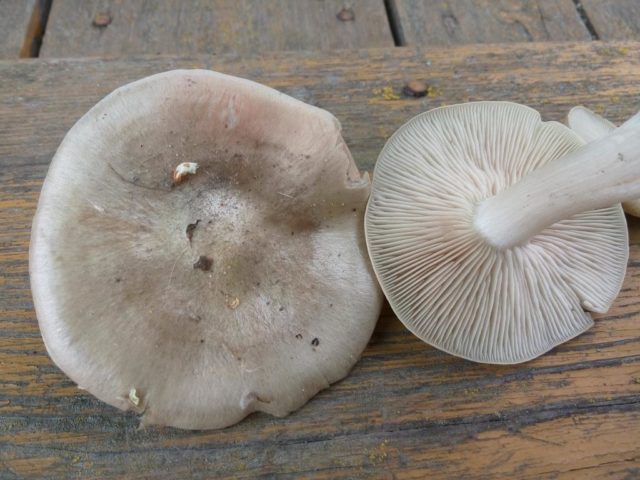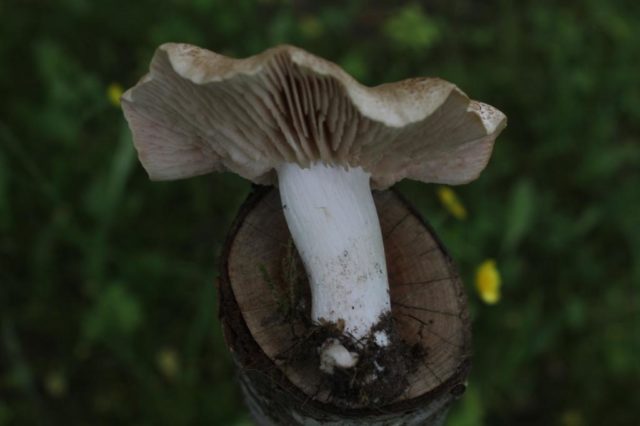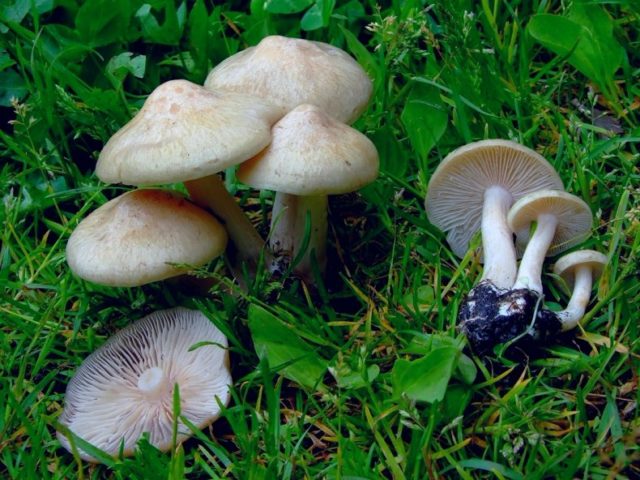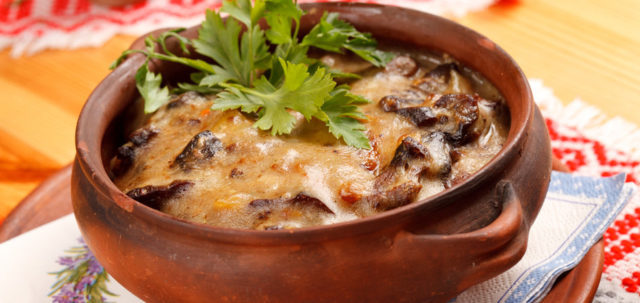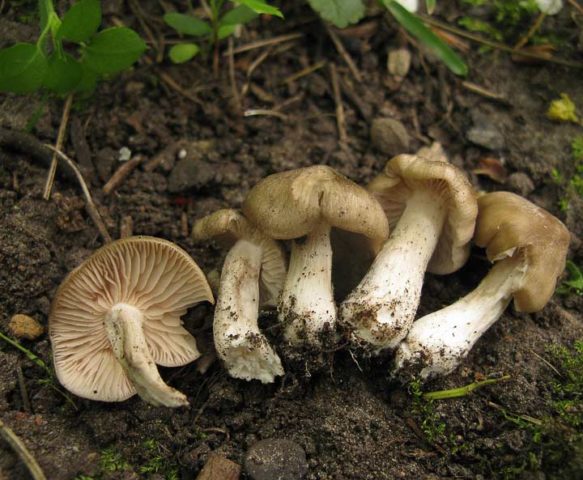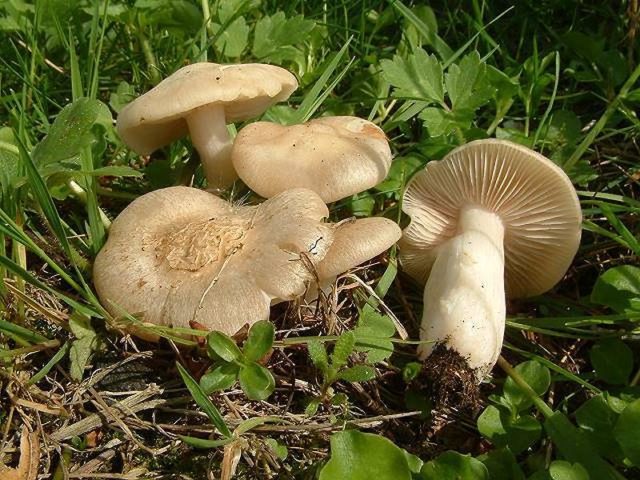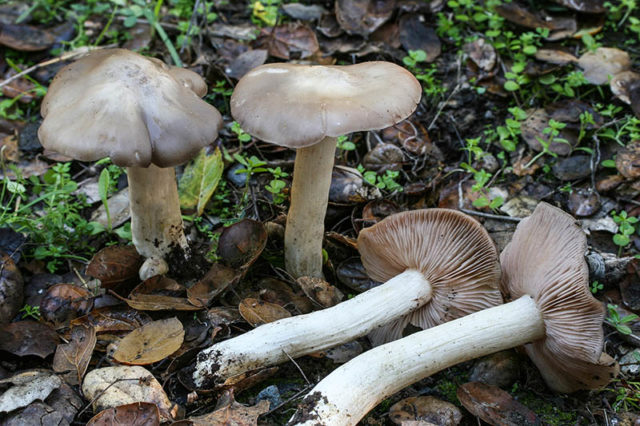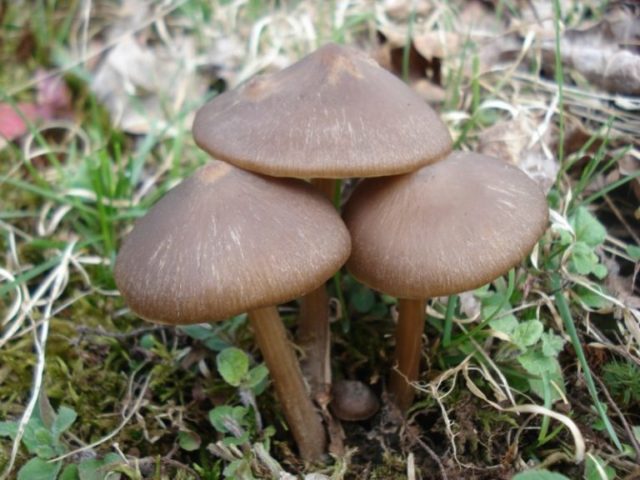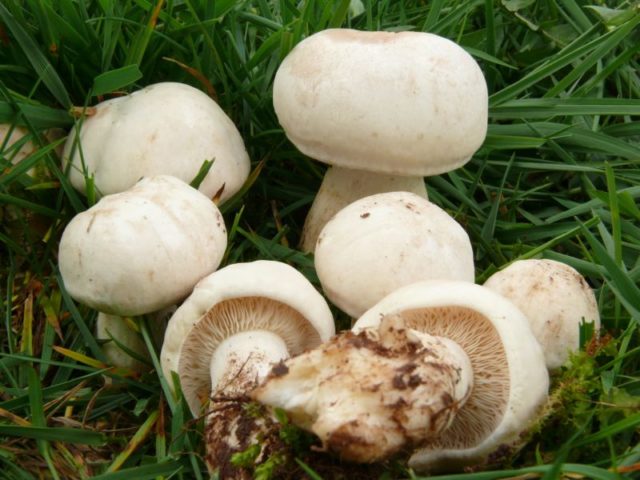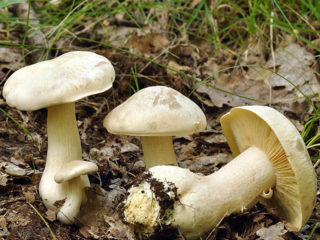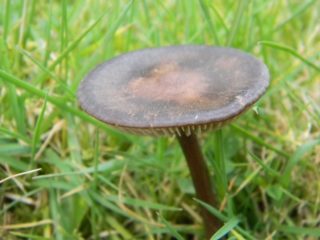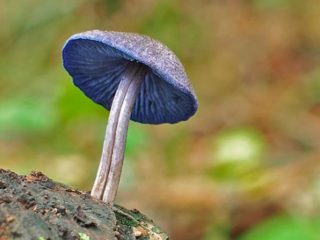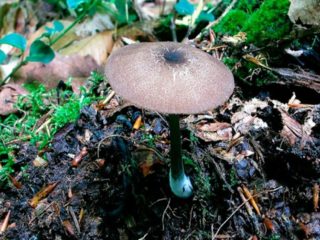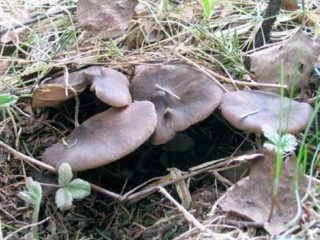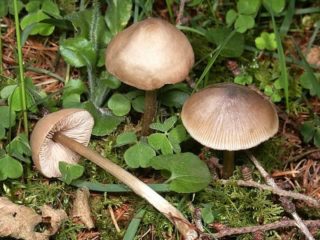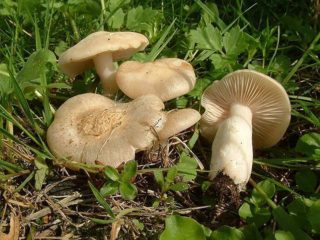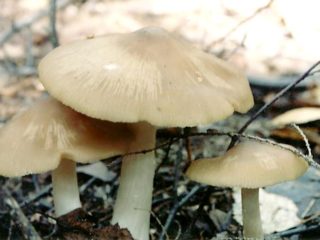Content
Garden entoloma is an edible mushroom that requires pretreatment. It has a pleasant taste, however, it can be confused with toxic counterparts, so it is important to study the features and structure of the edible entoloma.
What does the Entoloma garden mushroom look like?
The mushroom, which is also called podlivnik, subanotus, thyroid, corymbose, forest or blackthorn entoloma, has a rather recognizable appearance. Both the cap and the stem of the mushroom have characteristic features.
Description of the hat
The shape of the cap of the garden entoloma depends on the age. In young subslivniks, it is convex, and as it grows, it becomes prostrate and convex-concave, with a small tubercle in the center. A photo of a garden entoloma shows that the edges of the cap are wavy and uneven. The surface of the skin is silky fibrous or smooth and sticky during the rainy season.
Young garden entolomes are usually whitish in color, but with age they acquire pinkish, gray-brownish and even reddish hues. On the underside of the cap there are pinkish thin plates, wide and sparse.
Leg description
The garden entoloma Entoloma Clypeatum can rise on a stem above the soil surface up to 10-12 cm. The diameter of the stem can reach 2-4 cm, it is cylindrical in shape and often strongly twisted. In young mushrooms, the leg is dense and brittle, in adults it is hollow, slightly furrowed in the upper part and thickened in the bottom. The color of the stem of the garden entoloma can vary from whitish to slightly pink or gray.
Is it possible to eat Entoloma garden or not
The mushroom has a dense and fibrous brownish or white flesh. Garden entholoma emits a faint powdery aroma, it usually tastes bland.
According to the food classification, entoloma belongs to conditionally edible mushrooms. You can eat it, but first the mushroom must be thoroughly rinsed, peeled, and then boiled for about 20 minutes.
How to cook Entoloma garden
You can eat edible entholoma boiled, fried or pickled. After preliminary preparation, which consists in washing and cleaning the mushroom, the sub-cream becomes suitable for further use.
How to pickle Entoloma garden
A popular recipe for making garden entoloma is pickling, which allows you to prepare it for the winter. You can prepare as follows:
- First, about 3 kg of washed and peeled mushrooms are boiled for 20 minutes.
- After that, in another saucepan, pour water over 3 large spoons of salt, 4 small spoons of sugar, 15 black peppercorns, 8 pcs. dried cloves and a few bay leaves.
- After the mixture boils, boiled mushrooms are added to the future marinade and wait for a second boil, and then boiled for another 15 minutes under the lid, stirring regularly.
A couple of minutes before cooking, pour 6 large spoons of 9% table vinegar into the pan, stir and turn off the heat soon. Entolomes in the marinade are poured into prepared sterilized jars, without waiting for cooling, and screwed tightly with lids.
Entoloma Forest Roast
A tasty and healthy roast can be prepared from the edible entoloma mushroom:
- A small chicken carcass weighing no more than 1 kg is cut, washed and cut into medium-sized pieces.
- In a frying pan, the chicken is fried until half cooked, pre-salt and pepper it to taste.
- About 400 g of onions are cut into half rings, added to chicken meat and fried until golden brown.
- A small portion of boiled mushrooms with enthol, about 50 g, is cut into strips or pieces and also fried for 20 minutes.
- Fry 50 g of walnuts in a separate frying pan, then grind.
- Rinse and dry with 50 g of raisins.
- Sour cream sauce is prepared in a stewpan - 15 g of butter is melted, mixed with 25 g of flour and sautéed until the recognizable aroma of toasted nuts appears.
- Stirring the flour continuously, add 400 g of sour cream to it.
After all the ingredients of the roast are prepared, it remains to arrange them in ceramic pots. All ingredients are poured with hot sour cream sauce and sent to the oven preheated to 180 ° C for 25 minutes.
Recipe for salting Entoloma garden
The product is well suited for making tasty and healthy pickles. The recipe for the garden entoloma mushroom is very simple:
- Fresh mushrooms are washed, peeled and boiled in salted water 2 times in a row.
- After that, the entholoma is washed again, poured with clean water and put on fire again.
- Mushrooms are boiled for an hour.
- Dense layers are placed in a sterile jar, sprinkling abundantly with salt each layer.
In addition to salt, chopped garlic and fresh dill seeds must be added to entoloma. After that, the jar is closed, the lid is pressed on top with oppression and the mushrooms are removed to the refrigerator for two days.
Where and how it grows
Garden entoloma is a mushroom that is especially common in the northern regions of Russia, including the Leningrad Region. Usually grows in mixed and deciduous forests, forms a symbiosis with oak, birch and mountain ash. You can see the mushroom in meadows and along roads, on lawns and in gardens.
It is often found in summer cottages under fruit trees and shrubs - apple and pear trees, hawthorn and blackthorn, next to roses. This is the reason for the name of entoloma - garden. Usually the mushroom grows in groups, and quite large.
Doubles and their differences
The garden entoloma has several counterparts, and not only edible, but also frankly poisonous. You need to know how they look, so as not to accidentally eat a toxic mushroom, and carefully study the photo of the garden entoloma mushroom.
Pale brown entoloma
This edible mushroom belongs to the same genus as the garden variety, and therefore has a similar head and leg structure. It differs from forest entoloma in color, the shade of the fungus is usually brownish gray or brownish greenish, and the leg is shiny and white.
Tin Entoloma
This variety belongs to the category of poisonous mushrooms, so it is especially important not to confuse it with garden entholoma. The toxic mushroom has a fruit body similar in structure, but its cap is very large, up to 20 cm in diameter. Tin entholoma is distinguished by a light shade of the cap, creamy gray or off-white, and a thickened club-shaped leg up to 3 cm in diameter.
A distinctive feature of the poisonous garden entoloma is a weak unpleasant odor emanating from the pulp at the break. In addition, tin entoloma is not widespread in the north of Russia.
Spring entoloma
This poisonous mushroom is very similar to the forest species, but it is smaller in size and darker in color. The easiest way to recognize a poisonous mushroom is by the timing of its appearance, it grows from the end of April to the end of May, that is, in principle, it bears fruit at a time when the garden entholoma cannot yet be found in meadows and gardens.
Row garden May
This edible mushroom grows at the same time as entola and slightly resembles its whitish-beige color and irregularly convex cap. However, the garden row and the entoloma are very different, the leg of the row is thicker and not twisted, and the plates on the underside are white or cream.
How to distinguish garden Entoloma from poisonous
The varieties of entoloma are very similar in structure and color, sometimes it is difficult to distinguish them even for an experienced mushroom picker. You need to focus on the following signs:
- Edible garden entholoma usually grows en masse in early summer. If the mushroom is found in mid-spring or closer to autumn, then most likely it is a poisonous variety.
- Most of the poisonous entholm have a noticeable unpleasant odor, while the edible mushroom has a fresh, inexpressive odor.
Conclusion
Garden entoloma is suitable for human consumption, but requires processing and proper preparation. It is very important to be able to distinguish it from poisonous counterparts, otherwise the harm to health can be very serious.
